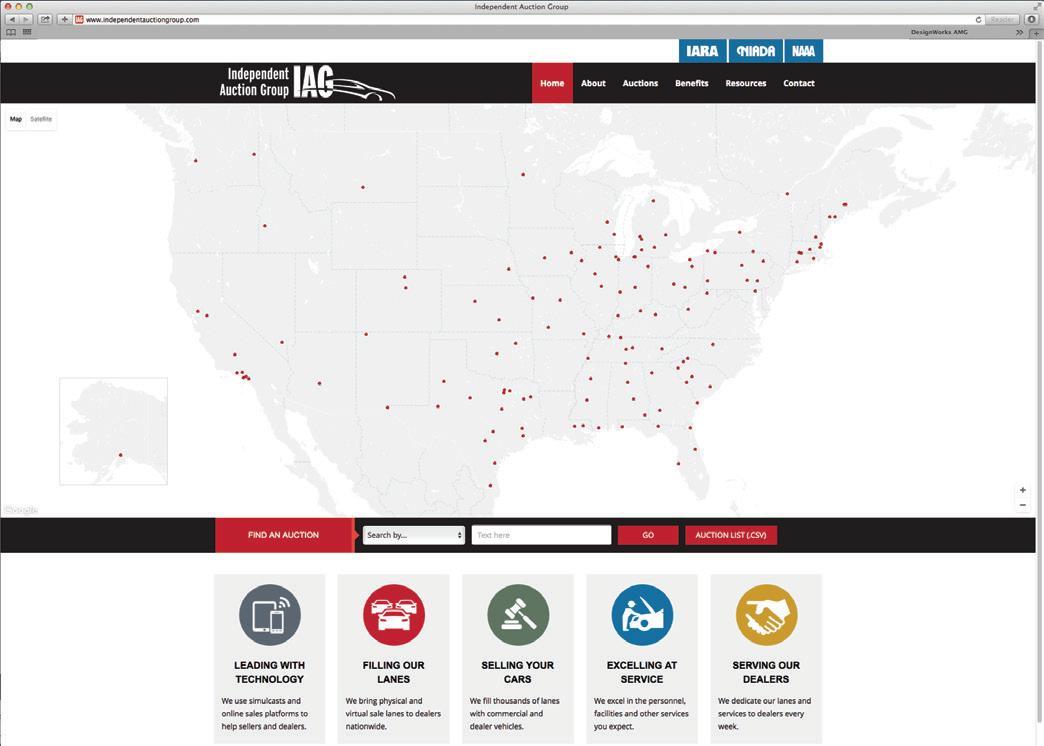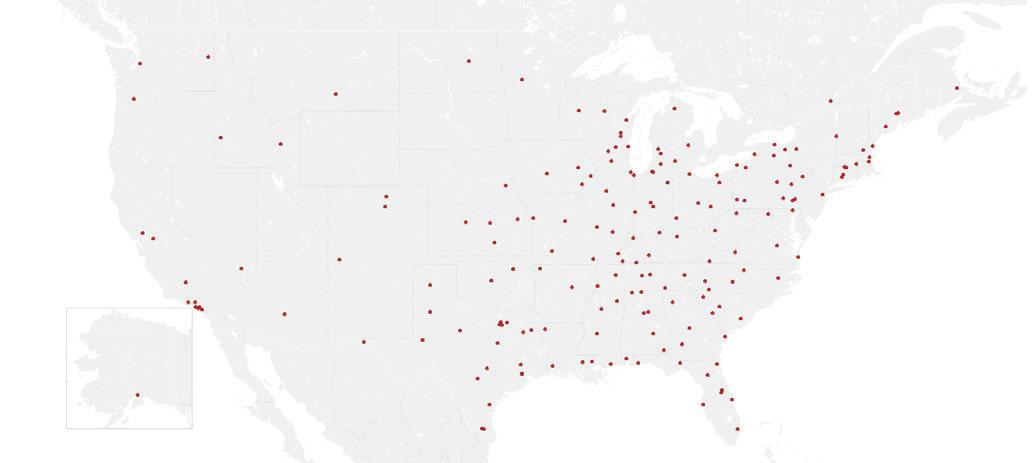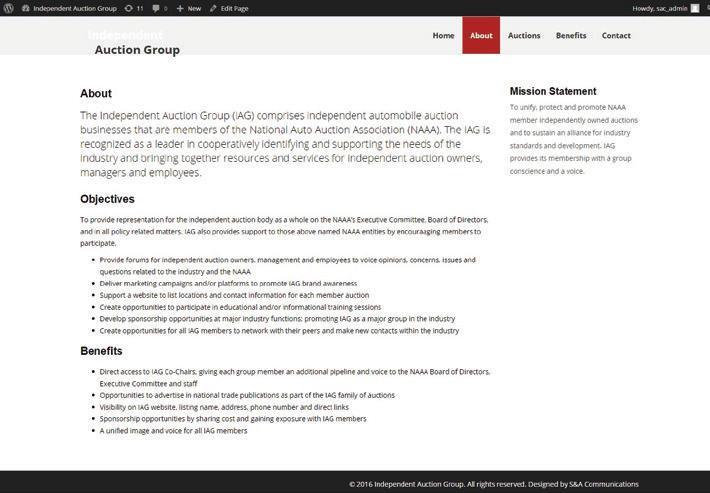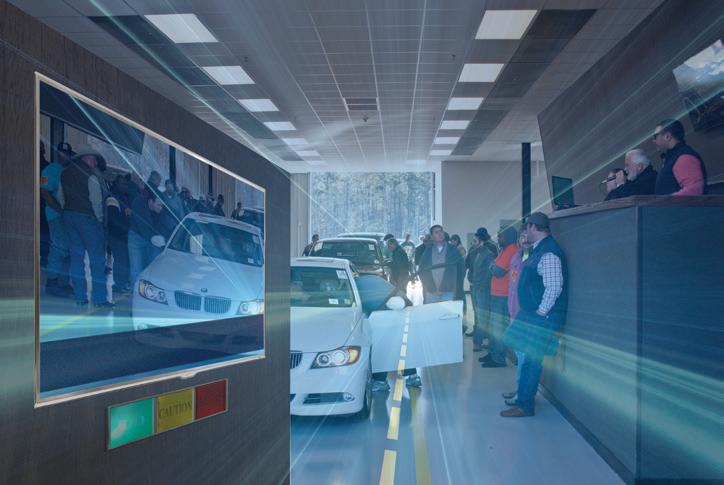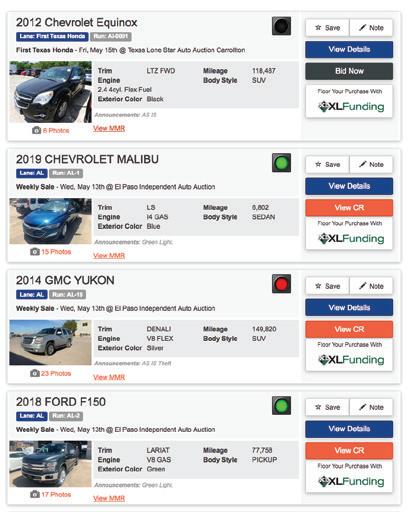Used Car News



 By Jeffrey Bellant
By Jeffrey Bellant
Hurricane Ian’s assault on Flor ida’s southwest coast resulted in heavy damage due to Category 4 winds and a deadly storm surge.
The Florida Independent Auto mobile Dealers Association, based in Orlando, is working with local and state officials to help its mem bers recover from the deadly storm.

“One of our directors, Leigh Ann, was in the affected area,” said FIA DA Executive Director Ejola Cook. “She is Leigh Ann Thompson, own er of Fort Myers Auto Mall.”
The aftermath of the storm has kept Cook busy serving the associa tion’s members.
“Well, it’s a wide range of things,” she said. “We’ve had dealers who weren’t impacted at all. But then Leigh Ann, for example – the roof came off her dealership. Thankful ly, no one was injured and her cars were OK.
“I think a lot of people in the af fected areas are more focused on their homes and their families,” Cook said.
Cook said the NIADA stepped in immediately to help.
“They have a 501(c)(3) fund for situations just like this and they helped Texas with the same fund earlier (during Hurricane Harvey),” she said. “They’re really out there helping at the grassroots, getting the financing that we can put our dealers together with.”
But she said dealers are just cop ing with the problems of the mo ment, such as getting power back on right after the storm. Cook said cell service is still spotty and water was still not potable at press time.
“They very much focused on the step by step, day by day challenge of getting their lives back together,” Cook said.

The FIADA’s director of educa
tion has been responding to dealers, answering questions and sharing information on small business re sources, SBA loans, etc.
“Some of them are just looking for the money to take care of their overhead until they can get their businesses back up and running,” Cook said.
Cook said at press time, the issues of insurance still were up in the air.
She said Brad Yeager, a general manager at ADESA Ocala, who was recently elected to the State House of Representatives, was dealing with a hospital whose first respond ers worked through the hurricane.
“The parking lot flooded and 60 cars were just totaled,” Cook said.
Yeager reached out to see if FIA DA could help, Cook said.
“So, we had dealers, like Clas sic Cars of Palm Beach, who have leaned in and are helping with spe cial financing and deferred pay ments so these nurses and first responders can get into cars to drive again while they are waiting for their insurance to kick in and get their money back,” Cook said. “They have to keep working and get
back to the hospital.”
Dealers who were impacted by the storm and have financial needs should reach out to FIADA, because the association does have services it can connect dealers with, she said.
Dealers who need help can call FIADA at 407-987-2411 or email at info@fiada.com.
Cook said she and her husband have a place on Captiva Island, one of the hardest hit spots, and the unit did suffer some damage.
“The only thing you can do is keep moving forward,” she said. “There’s a lot of that going on down there. People are really pulling themselves up by their bootstraps. The clean ing, fixing and construction is al ready going on at a fever pace.
“It’s Florida strong.”
FIADA also had to cancel its state convention at the last minute since it was scheduled to be held in Or lando on Oct. 1.
The group expected a huge turn out for the original date, which would have included a Classic Car show with an auction raising money for charity. Cook hopes to resched ule the event in January.


Buy-here, pay-here dealers face special challenges in the current market and finding ways to thrive requires creativity and knowledge.
Ken Shilson, president of Sub prime Analytics, will address the most pressing issues at NIADA’s BHPH Super Forum event in Aus tin, Texas on Nov. 9-11. There is a full slate of speakers and subjects, from digital marketing and the new Safe guards rule to I.D. fraud and finance.
Shilson said smart dealers are us ing their entrepreneurial abilities and creativity to find alternatives. Auctions and online sources are fine,
paid $6,000-$7,000 per vehicle prepandemic are now paying $8,000$9,000 for a lesser vehicle.
That drops return on investment right off the top, Shilson said, put ting everyone in a cash crunch.
The idea is to generate cash quick ly through down payments and de ferred payments to compress the cash.
Tax returns will be critical to cash flow and reducing the cash in the deal.
In this environment, TRS Tax Max is a firm that uses tax returns to help BHPH dealers draw bigger down payments and have better collec tions.
Bill Neylan, president and CEO, said dealers continue to tell him that market conditions are deteriorating and collections, along with down payments, remain a struggle.
“Another thing I’m actually seeing is dealers are extremely leveraged on their lines of credit and they des perately need more sales and better collections,” Neylan said.
“We can solve these problems by converting a customer’s W-2 into a down payment and even help them with collections,” Neylan said.
“For example, if a customer is $800 behind in payments, we can help them get that delinquency caught up and paid through their tax refund.”
As prices of vehicles start to de cline, dealers don’t want cars back.
to pay for repair notes, by placing a March 15 balloon payment on it and using the tax refund for it.
“It’s something we’ve been pro moting for the last few years,” Ney lan said.
Once January and February come around, Tax Max offers a refund ad vance product that gets dealers up to $6,000 the same day for customers with a W-2.
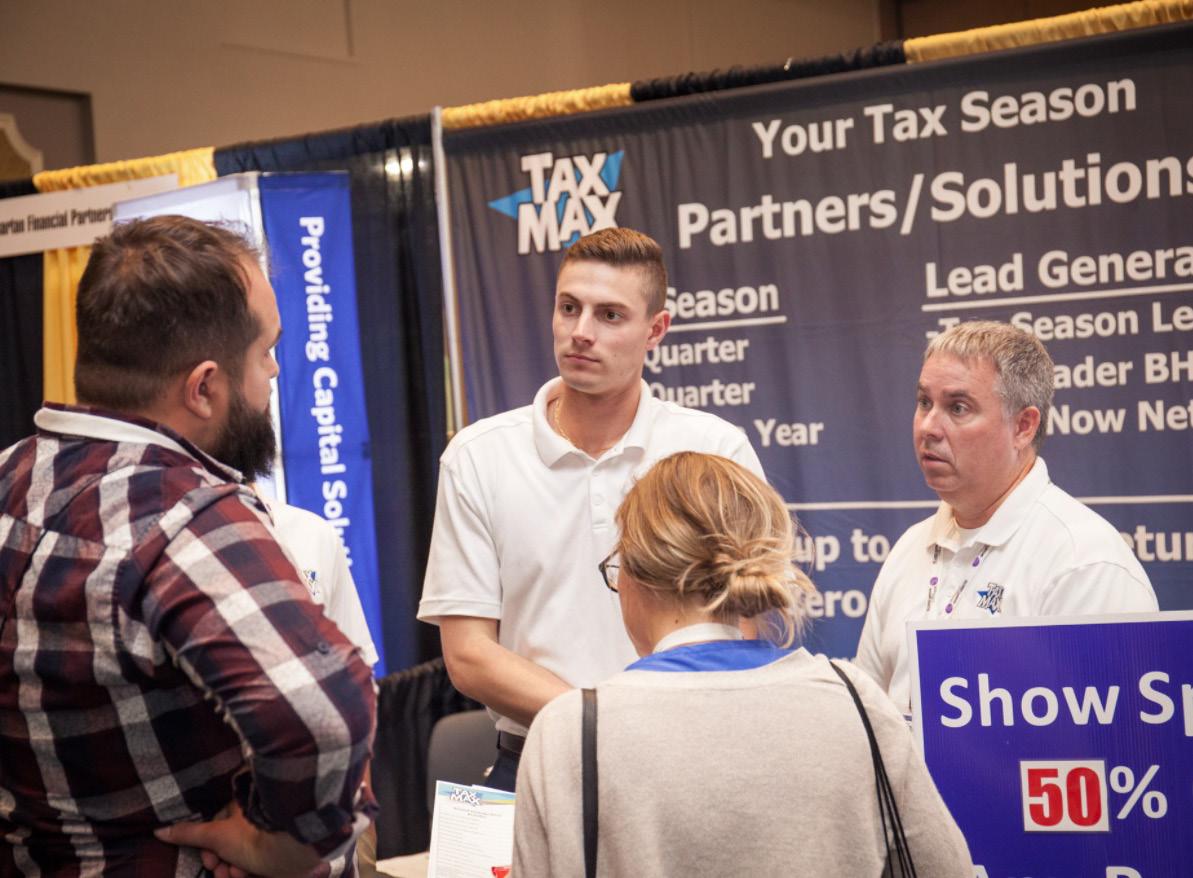
The dealer gets the advance back when the return comes in.
The customer gets a link to file a return directly to Tax Max, with the money going to the dealer.
Learning about different products like this can be a benefit of a dealer 20 group program where dealers learn what others are doing.
Bill Elizondo is an NIADA senior 20 group moderator.
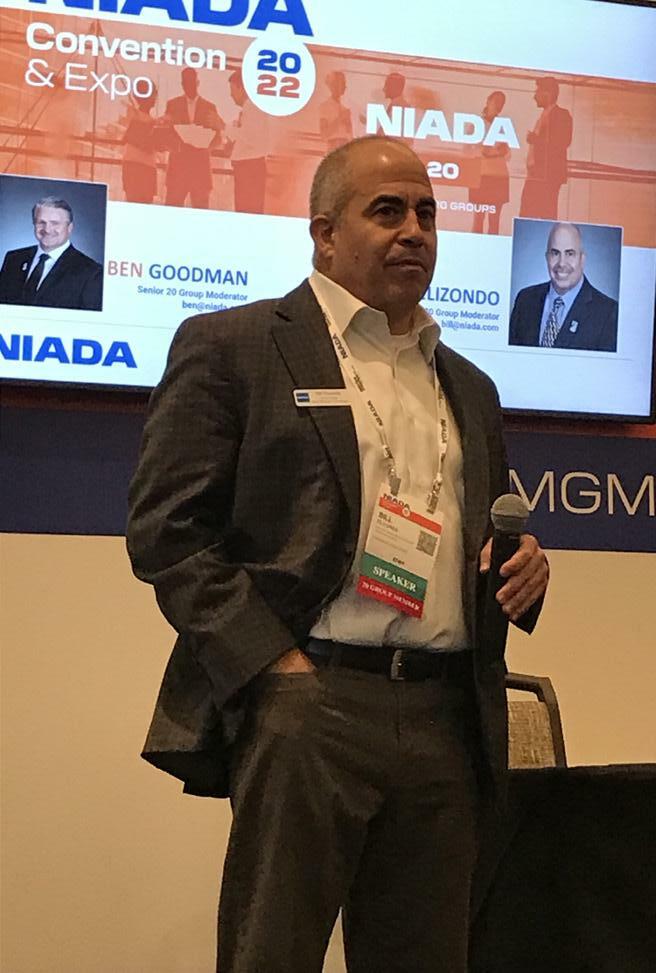
“That’s the thing about 20 groups, it’s the power of peers,” he said.
Bill Elizondobut dealers also have to look for dif ferent ways to supplement their in ventory.
For example, target people who are getting rid of their cars and an ticipate it.
“Build a buying network focusing on a lot of different alternatives,” Shilson suggested.
BHPH prospered more than other industries during the pandemic and it required this type of creativity.
“Cash is king, right now,” Shilson said. That means getting as much cash up front as quick as you can.
Keeping that vehicle sold through strong collections is crucial.
Shilson’s focus in his keynote for the conference is keeping the mo mentum going.
He promises a fresh take on how to boost profits in this market.
Preparing for the conference, Shilson noticed that dealers who
Even before tax return season, dealers who get a down payment now, can use the Tax Max product to schedule an “irregular” payment later when the refund comes in.
For example, in October, through Tax Max, a dealer can estimate a customer’s tax return and schedule a $1,500 payment in the contract for March 15 through the customer’s tax refund.
Doing it now is like a double-down payment, with the second one com ing at tax time.
Neylan said it’s an easy sell for cus tomers because that additional larg er payment during tax season can cut their term length several months or up to 21%.
Dealers should not limit this pro gram to struggling customers. They can also use this with customers who are dropping a $2,000 down payment.
If dealers have customers who are delinquent, Tax Max allows them an incentive to work with them un til the tax refund comes to save the deal.
Dealers can also use the product
Dealers can sell the program all year around. By asking the custom er if they’d be interested in shaving months off their installment con tract, the dealer can schedule the tax refund payment ahead of time and make it part of the deal.
Tax Max does the tax return and the refund goes directly to the deal er for the payment.
The pandemic stimulus money slowed down Tax Max’s business for a while, but as inflation rises, dealers are coming back, Neylan said.
He expects this to be the strongest tax season ever for the company be cause both dealers and consumers are “desperate for this money.”
Some dealers are even offering to pay for the customer’s tax refund costs just to help seal the deal, Ney lan said. Or a dealership can buy the new Elite Tax Max program for a flat fee, allowing dealers to offer free tax prep to all their customers and em ployees.
Tax Max also has a “taxes by text” program, where the dealer texts the customer.
Elizondo said 20 groups are espe cially helpful for BHPH dealers be cause the business has “a thousand moving pieces.”
Plus, BHPH is really the finance business, it’s the paper business, not the car business, Elizondo said.
Sourcing vehicles remain a prob lem for many independent dealers, but BHPH dealers have another is sue.
“Getting cars to the frontline is a challenge,” Elizondo said. “I’ve got dealers right now who have 200 cars in stock, but they only have 25 cars on the frontline because they don’t have the parts.
“They can’t find the parts quick enough to get them to their locations in a timely manner to help them get them outside.”
Parts are either hard to find or too expensive. Even if a dealer has the parts, the dealer still has another problem.
“I can’t have technicians work on the cars because I can’t find techni cians,” Elizondo said.
Dealers who are in 20 groups can share with each other tips and ideas.
It’s not surprising with such a strange and shifting market, that two economists would have differ ent views.
ADESA Chief Economist Tom Kontos and Cox Automotive Chief Economist Jonathan Smoke recent ly took a look at today’s auto market and economic conditions.


One thing they agreed on is the in
tractable problem of inventory sup ply.
“It’s a perfect drought,” Kontos said. “Normally, when one (area) is down, the other is up. If we weren’t getting as many off-lease, we’d be getting more dealer cars. But dealers are holding on to their trades.
“Then if we weren’t getting rent als, we’d be getting off-lease or com mercial fleets or rental fleets.
“But it’s a perfect drought.”
Smoke added it’s a problem that’s not going away anytime soon.
“I think we’re on a path that in evitably means we’re going to be much more supply constrained for a much longer period of time – cer tainly more than the industry has experienced coming out of any sort of downturn,” Smoke said. “We’re facing the proposition of a potential recession next year and predicting exactly what’s going to happen next year is extremely difficult.”
Kontos added the bad news on the used-car side is continued supply is sues in part because of the tightness in the new-car supply, which went from 17 million a few years ago to

just over 14 million this year.
“That’s a whole lot of used cars we won’t have on the ground for the foreseeable future,” Kontos said.
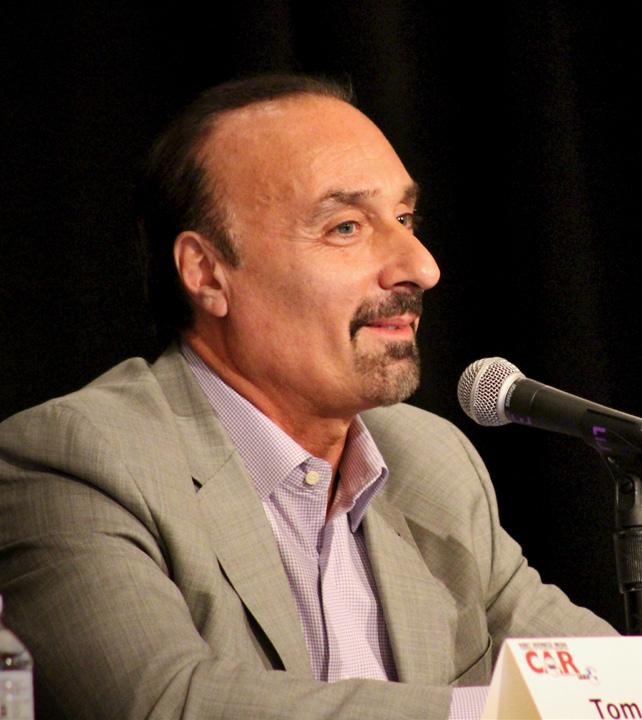
The one positive of low supply of higher-priced cars is that it keeps dealers “lean and mean.” They are buying to sell and prevent having an expensive car sit on their lot or sud denly drop in value.
“Discipline is there, so I don’t think dealers have much to fear that the cars they do have on the ground are going to lose so much value that they take a big hit on their P&Ls (profit and loss statements),” Kontos said. “I think there will be a gradual decline and there’s a floor under neath how low prices might fall.”
The demand side has softened and could continue if people hold off and stay in their current vehicles.
On the overall economy, Smoke is not optimistic.
He said the Federal Reserve’s con tinued aggressiveness in raising in terest rates has pushed him to be lieve a recession in 2023 is likely.
What makes that assessment more challenging is the same inventory problem, he said.

“We’ve never gone into a reces sion as an industry with no supply,” Smoke said. “Usually, vehicle de mand is slow heading into a reces sion. That’s why, almost always, an economic downturn begins with ve hicle prices coming down.”
In recessions, even in the Great Recession of 2008-2010, vehicle prices started to stabilize and per form pretty strongly even before the recession was over.
“The reason is by the time you work through a temporary over-sup ply problem, you are basically in the midst of a period of time when the used market, in particular, is very supply constrained,” Smoke said.
Today, the industry can already see how far the used supply has dropped.
ST. CLAIR SHORES, Mich. – Used car dealer Maurice VanCoillie, 97, has received just about every honor and award a car dealer could get.
“Mr. Van,” as he’s known to his friends and fellow dealers in Michi gan, just won the most surprising honor yet, He recently received an envelope in the mail from the Secretary of State.
For most dealers, that might in duce fears of fines or compliance violations.
Instead, VanCoillie received a spe cial dealer license plate and a con gratulatory letter from Douglas E. Trutzl, the manager of the state’s Business License Section.
In 2020, the state issued new per manent plates and Trutzl pulled a special plate out of production to
give to Mr. Van.
Unfortunately, the pandemic hit and he wasn’t able to deliver it.
So, this summer, Trutzl sent the dealer plate, with the special num ber “000 D 095,” in honor of Mr. Van, who turned 95 that year.
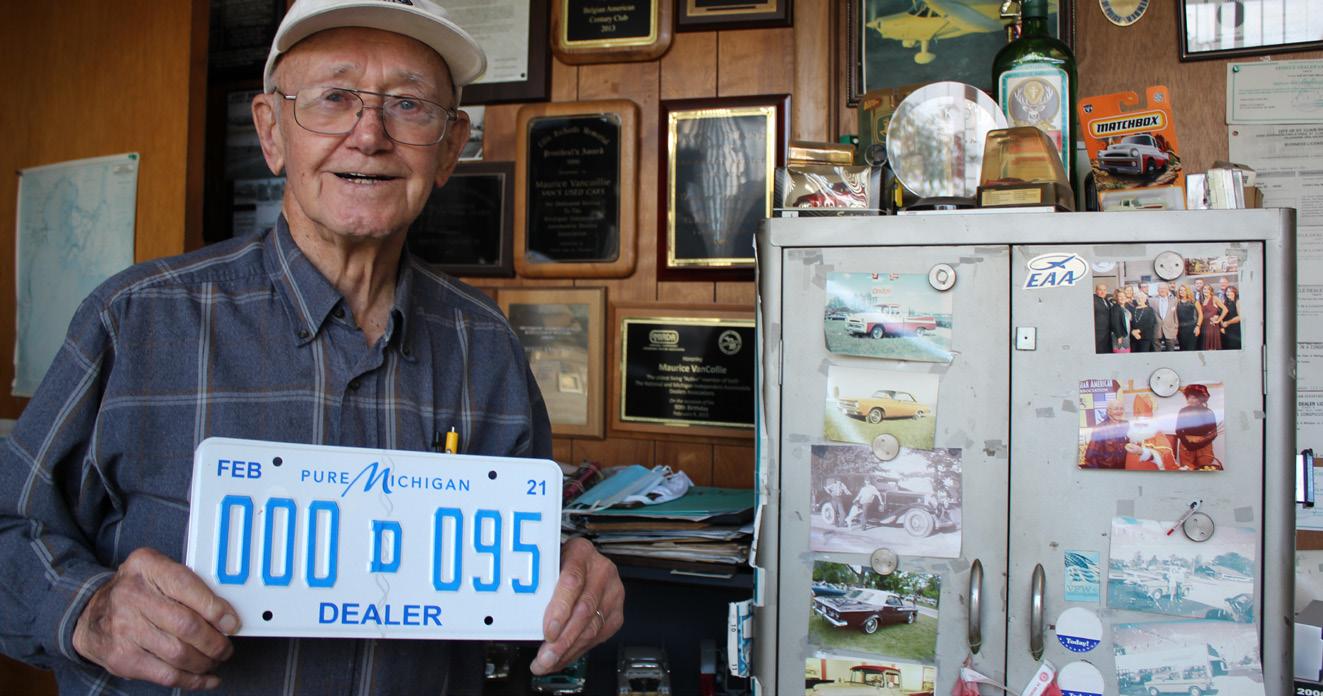
Trutzl wrote that the plate is a real dealer plate, taken out of production and “essentially does not exist in the system.”
The plate, for display purposes, honors Mr. Van as the oldest oper ating dealer/owner in the state, but also for his spotless record.
Trutzl praised VanCoillie for his commitment to his community and customers. The administrator also wrote:
“Your dealer history is one of the oldest I have seen in our system and stands out from the crowd because of the lack of compliance history.
“In other words, there are no cus tomer complaints and no adverse
compliance findings.”
He described VanCoillie’s record as “extraordinary,” especially since he received his first dealer license in 1947.
VanCoillie believes the letter and
recognition gives credibility and honor to the dealer community.
He said many dealers do good things but nobody knows about it and “some schmucks ruin it for ev erybody.”

With very low production in 20212022, the wholesale side has “a lon ger, slower” vehicle constrained market, he added.
Add to that, this year the market will see the lowest lease penetration rate ever, Smoke said.
Tight supply and high demand meant there was no motivation to push or incentivize leasing.
Kontos doesn’t see gloom and doom at the moment.
“I’m not dire about it,” he said.
On the macro side, Kontos said the news of the two consecutive quarters of GDP decline – a tradi tional sign of recession – isn’t that bad since the rate of decline was less than 1% in each quarter.
Low unemployment also remains a positive sign for Kontos.
“What’s not so good about the la bor market is that there are more openings than people filling them up,” he said.
“One part of the lasting impact of the pandemic is it allowed people to stand on the sidelines a little bit lon ger than they would have.”
The moratorium on rents, repos sessions and student loans is part of the reason.
Also, maybe families have gone from two-parent workers to just one, Kontos said.
The negatives include productiv ity, which is down, and inflation which has been rising, he said.
Repossessions continued to be elu sive.
Smoke is not seeing defaults on repossessions like normal, so until there are defaults, there won’t be re possessions.
Also, if a consumer allows their car to be repossessed, what then? Prices and interest rates are so high, they will have a hard time getting another car, Smoke added.
Kontos agreed that repossessions are still muted, which he thinks could mean lenders are still reluc tant to repossess or maybe those owners see the values and sell the car.
Off-rentals have come back a little bit and Kontos guesses that manu facturers may start turning to the fleet market or rental fleets to sell more vehicles.
He said ADESA has been seeing off-rental units in the lanes.
Smoke said while there are posi tives on domestic production, there are still some headwinds.
In the near term on the new-car side, the good news is that North
American production is improving, even if European and Asian auto makers are a little further behind, he said.
But if all manufacturers anticipate we’re going into an economic cycle where there’s a shift to electrifi cation and a move to not be so de pendent on one supplier for differ ent parts, the automakers may take the opportunity to walk the produc tion ramp-up pretty slowly, Smoke said.
He added that even if there was a pent-up demand in 2021 and 2022, the equation has changed drastically with soaring inflation and rising in terest rates.
Those factors will likely cool some of that pent-up demand.
It’s not just that it will be a snail’s pace move back up to 17 million units, he said.
“I hypothesize that we may never get to those levels, because the very changes we’re seeing now are tak ing capacity out of the marketplace,” Smoke said.
That will add to more constraints on supply for both new and used.
It will make manufacturers and franchises more profitable than they have historically been through efficiency and selling more products and services at a higher price.
The pain will come for suppliers.
“That’s where we see the most risk,” Smoke said. “Manufacturers are trying to do more things region ally or locally as opposed to finding the single lowest cost sources across the globe.”
These factors, especially the low supply, will lead to “more intense competition” for used retail.
That competition won’t be just on the market share side, but also on the inventory acquisition side.
Franchise dealers, because of sources like end-of-term leases, have an advantage.
The result will be more consolida tion in the used-car market.
Will tax time be coming up early next year?
Kontos expects a typical seasonal uptick in wholesale prices at tax time.

Hurricane Ian ultimately will take a lot of cars out of the supply as well, though it will also create a demand to replace those vehicles, Kontos said.
Wholesale values are tapering at press time, which is a slower clip than normal for this season, he said.
Mike Whistance, owner, Country Truck and Auto, Fort Lupton, Colo
“We’ve had our own store for 20 years; I’ve been in the business for 32 years. Fort Lupton was our first location and the second one (Broomfield) we just opened in January.
“Our inventory is about 100, that’s what we have list ed online. Our monthly sales average – the two sites com bined – 55.
“We sell predominantly trucks, probably that’s 85 percent of our sales. Cars and SUVS would be 10-15 percent.
“We go to the Dealers Auto Auction of the Rockies and OVE online. We work with them a lot. We’re not really looking for a certain age of vehicle. We’ll buy some of the older stuff. It’s got to have something special if
it’s older, like low mileage. We try to stay under 120,000 miles.
“We don’t do any buy-here, pay-here.
“We have pretty strong down payments because of the trucks. Some guys put down $15,000, some put down $1,500. The average is probably closer to $5,000.
“Our average recondition ing cost is $1,500 per vehicle. We have our own service fa cility and we put a 3-month warranty on each vehicle. We do a lot with dually trucks so that can be expen sive for tires.
“We do mostly online ad vertising.
“Any dealer just starting out, I think it’s good to be ac tively involved in your com munity. Right now, I’m driv ing a wheelchair van down to a family in need. The Col orado IADA charity is a very worthwhile endeavor. The
annual fundraiser gala will be in November. Last year we raised $400,000.
“We just sold a 1998 Dodge Club Cab dually for $25,000. That’s where we are now with prices. It had 135,000 miles.”
Kelly Herb, co-owner, Tom Stehouwer Auto Sales, Grand Rapids, Mich.

“We’ve been in business 37 years, all in the same loca tion. I’ve been here for 31 of them.
“Our average inventory is about 80. It’s been as low as 60 and as high as 120. We retail about 30 a month, and another 20 wholesale.
“We probably sell 60 per cent trucks and 40 percent other vehicles. We sell about 30 percent imports.
“Our average down pay ment is a couple grand.
“We’re not really looking for an average age of car.
We’ve got a ’63 Corvette and a ’22 GMC pickup. If it’s a good car for our exist ing customer base then it doesn’t matter. The mileage level might depend on the brand of car. The Hondas and Toyotas seem to do bet ter.
“I’ve been active in the state association for five years. The founder of this dealership, Tom Stehouwer had been active for 25 years. He’s a past state quality deal er award winner.
“My advice to dealers is this: don’t sell junk. And if you tell a customer some thing, do it.

“June 2021 was the best month ever in the history of Stehouwer Auto Sales. A huge thank-you to God for blessing us with the best customers imaginable and jobs that don’t feel like work.
“Thanks to Tom Stehou wer for all you do to set us
Compiled by Ed Fitzgeraldup for success, always put ting the employees ahead of yourself.
“We have a great staff. Thanks to Josh Egge for put ting it all on paper and mak ing our customers’ financing fun and easy; Shelley Stowell for keeping us compliant, our titles in order, and mak ing sure we’re all smiling.
“Thanks to Mary Chicklon Stehouwer, for keeping track of the hundreds of checks we write but making sure the money comes in, the bills are paid and many office du ties are handled on time.
“And last but by no means least, thanks to my wife Bridget, for decades of total support even when faced with ‘I’ll be home late,’ ‘I can’t go, a customer just called,’ ‘I need your car now.’
“The last car we sold was an ’18 Chevrolet High Coun try pickup with 65,000 miles and the price was $43,500.”
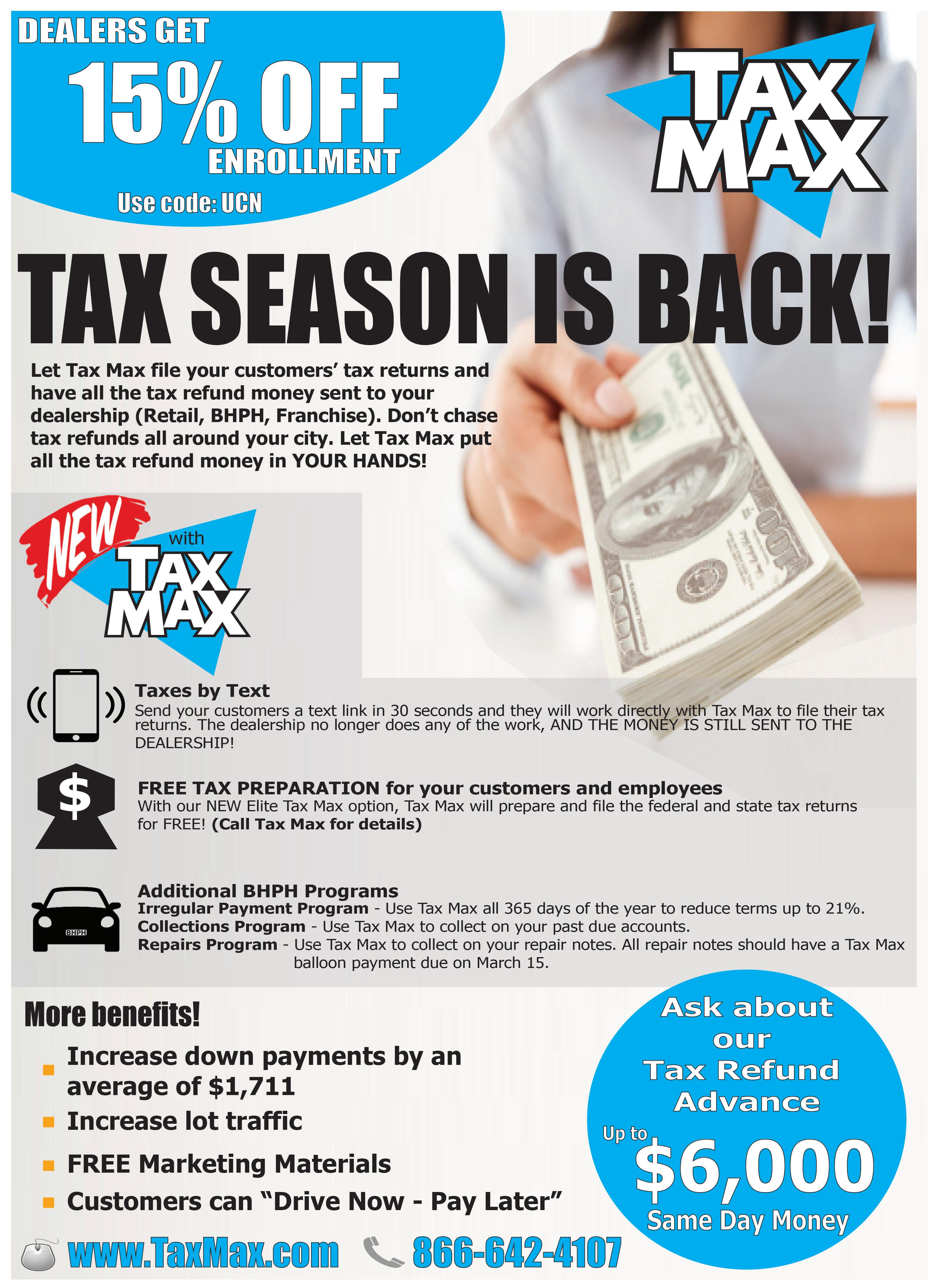
NORTH CAROLINA L. Ray McMahan, Jr., owner/president, Ray’s Southern Auto Auction, Greensboro, N.C.
“My dad started the busi ness in 1958 and I took over the auction in 1991. We’ve been at this location for probably 30+ years.
“We have four lanes. We’re fighting for every car, no different than anyone else. Now, the prices are drop ping and some of these deal ers are afraid to be hung out to dry on these cars.
“(Volumes) are around 350 to 400. (Pre-COVID) they would have been 500 or 550.
“Unlike us, the bigger auc tions relied on all the fleet, lease, rental car and repo companies. That dried up.
“(For sales percentages) we were running at 70% to 75%. But now we’re hanging around at 45% to 50%.
“I just (closed out a deal)
from one of our customer’s cars after a sale. He said he’s trying to buy everything he can that’s under $30,000. No more $50,000 to $60,000 or $70,000 trucks.
“A dealer’s customer will tell them what they need to buy. If they’re in an $8,000 market, they don’t need a $40,000 truck.
“Even the cars that are now bringing $2,500 to $3,000, before COVID-19 were worth $800 to $1,500. Now they’re going back (getting cheaper).
“We sell new-car dealer trades, independents and we sell for five different chari table organizations.

“We go to individuals’ homes to pick up the chari table cars. I bought a 2020 Rollback (tow truck) brand new and now we’ve got about 375,000 miles on it.
“Our average price in the lanes is $3,440, but we also
have all the charitable cars. We also sell cars up in the $30,000 to $40,000 range.
“We’re like a buffet. We sell everything from soup to nuts.”
Mike Clopton, owner, Oklahoma Auto Exchange, Oklahoma City, Okla.

“We’re running about 650 a week.
“I’ll tell you, right now we’re down for the year about 6% for vehicles sold. But our average sales price is up over $900.
“Our average sale price is around $8,400.
“What’s really interest ing is that local dealers are starting to bring more cars. When COVID-19 was at its strongest, they were trying to retail everything and not bring them to the auction.
“With stimulus money not coming anymore, people
Compiled by Jeffrey Bellantaren’t showing up to the dealership with a pocketful of cash. It forced dealers to trade differently. You can’t force that retail buyer to come in and buy trades.
“I think it’s probably healthy for the whole busi ness overall. People think their auction is great, brings a ton of money and that’s good.
“But in order for the indus try to be healthy, the buyers have to win sometimes.
“We’re coming in on a time where the buyers are start ing to win and that’s healthy. That means the general public is able to buy that car cheaper than they were dur ing the two years of the pan demic.
“Franchise store owners are probably not overly ex cited, but they’ve had two good years.
“There’s another thing that’s helped our growth.
Online sales are great when there are really good quality vehicles. What’s happening there are more repos in the market now and the quality of those vehicles is a little bit less.
“So (dealers) buying from the auctions – that are not (physically) running the cars through the lanes – are basi cally bidding on a condition report or a picture.
“And when you’re not run ning a car through the lane, there’s no one in the lane to fall in love with that car.
“An auction, like ours, with a strong physical presence in the lane, is able to bring way more on that type of car and it justifies the $200 trans port fee.
“You just get more (action) when you have a live bidder. “I’m pretty optimistic. We’re positioned for growth and we think the growth is coming.”
ADESA Boston November 4, 11 508 626 7000
ADESA Charlotte November 3, 17 704 587 7653
ADESA Chicago November 11 847 551 2151
ADESA Cincinnati/Dayton November 15 937 746 4000
ADESA Golden Gate November 15 209 839 8000
ADESA Indianapolis November 1, 15, 29 317 838 8000
ADESA Kansas City November 1, 15, 29 816 525 1100
ADESA Lexington November 17 859 263 5163
ADESA New Jersey November 3, 17 908 725 2200
ADESA Salt Lake November 22 801 322 1234
ADESA Tulsa November 11 918 437 9044
ADESA Washington DC November 9 703 996 1100
Columbus Fair AA November 16. 23 614 497 2000
Manheim Atlanta November 2, 3, 17, 30 404 762 9211
Manheim Dallas November 8, 9, 23 877 860 1651
Manheim Denver November 9 800 822 1177
Manheim Detroit November 3, 17 734 654 7100
Manheim Fredericksburg November 10 540 368 3400
Manheim Milwaukee November 9, 23 262 835 4436
Manheim Minneapolis November 2, 30 763 425 7653
Manheim Nashville November 22, 23 615 773 3800
Manheim Nevada November 18 702 730 1400
Manheim New Jersey November 3, 9, 23 609 298 3400
Manheim New Orleans November 23 985 643 2061
Manheim Orlando November 1, 8, 15, 22, 29 800 822 2886
Manheim Palm Beach November 16, 17 561 790 1200
Manheim Pennsylvania November 3, 4, 11, 17, 18 800 822 2886
Manheim Phoenix November 10, 22 623 907 7000
Manheim Pittsburgh November 9 724 452 5555
Manheim Riverside November 8, 10, 22 951 689 6000
Manheim Seattle November 16 206 762 1600
Manheim Southern California November 3, 17 909 822 2261
Manheim Tampa November 3, 17 800 622 7292
Manheim Texas Hobby November 3, 17 713 649 8233
Southern AA November 9 860 292 7500
ADESA Boston November 11 508 626 7000
ADESA Golden Gate November 15 209 839 8000
Manheim Atlanta November 2, 30 404 762 9211
Manheim Dallas November 8 877 860 1651
Manheim Milwaukee November 9 262 835 4436
Manheim Nashville November 23 615 773 3800
Manheim New Jersey November 9 609 298 3400
Manheim Orlando November 8 800 822 2886
Manheim Palm Beach November 16 561 790 1200
Manheim Pennsylvania November 3, 17 800 822 2886
Manheim Riverside November 10, 22 951 689 6000
ADESA Boston November 11 508 626 7000
ADESA Salt Lake November 22 801 322 1234
Columbus Fair AA November 16 614 497 2000
Manheim Denver November 9 800 822 1177
Manheim Fredericksburg November 10 540 368 3400
Manheim New Jersey November 23 609 298 3400
Manheim Orlando November 1, 29 800 337 8491
Manheim Pennsylvania November 4, 18 800 833 2886
Manheim Pittsburgh November 9 724 452 5555
Manheim Seattle November 16 206 762 1600
Manheim Southern California November 3, 17 909 822 2261
Southern AA November 9 860 292 7500
ADESA Golden Gate November 15 209 839 8000
Manheim Milwaukee November 9 262 835 4436
Manheim Pennsylvania November 3, 17 800 833 2886
Manheim Atlanta November 2, 30 404 762 9211
Manheim Dallas November 8 877 860 1651
Manheim Nashville November 23 615 773 3800
Manheim Riverside November 10, 22 951 689 6000 Manheim Atlanta November 2, 30 404 762 9211
Manheim Palm Beach November 16 561 790 1200
Choose Chase on ADESA.com and OVE.com for quality bank sourced vehicles. Contact auctions directly for current sale information.
The Jaguar word mark, the Jaguar logo, and Jaguar Financial Group are trademarks of Jaguar Land Rover Limited and any use by JPMorgan Chase Bank, N.A. (“Chase”) is under license. The Land Rover word mark, the Land Rover and Oval logo, and Land Rover Financial Group are trademarks of Jaguar Land Rover Limited and any use by JPMorgan Chase Bank, N.A. (“Chase”) is under license.
The tradename “Subaru Motors Finance” and the Subaru logo are owned / licensed by Subaru of America, Inc. and are licensed to JPMorgan Chase Bank, N.A. (“Chase”).

Maserati Capital USA, the Maserati logo and model designations are registered trademarks used by JPMorgan Chase Bank, N.A. (“Chase”) under license from Maserati S.p.A.
The tradename “Aston Martin Financial Services” and the Aston Martin logo are owned by Aston Martin Lagonda Limited and are licensed to JPMorgan Chase Bank, N.A. (“Chase”). Neither JPMorgan Chase Bank, N.A. (“Chase”) nor any of its affiliates are affiliated with ADESA, Inc. or Manheim, Inc. Each auction is solely responsible for their website content, sales events, promotions, fulfillment and operation of the auction.
©2022 JPMorgan Chase Bank, N.A. Member FDIC (22 0011) 11/22
A broad selection of pre-owned vehicles from an industry leader



This essay represents 300 columns as part of this splendid publication. A lot has changed since 2009 – not gradual change but sweeping, swallow ing change, brushing aside those who would choose to lean on the status quo. The name that applies, not just to change but the rate that it was taking place, is ‘com pression,’ fueled by rapid technological leaps.
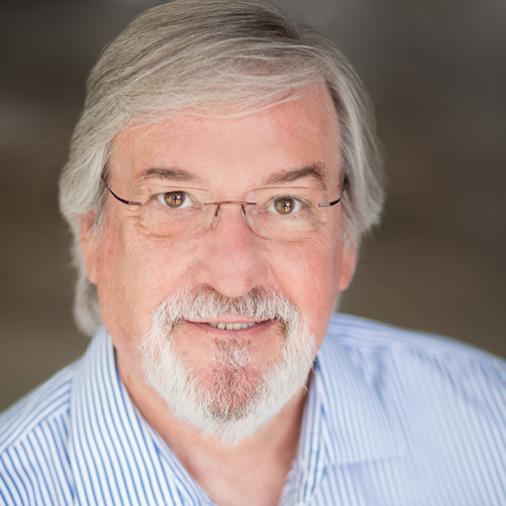
The first iPhone was re leased just 15 years ago as a communication adjunct to the iPad. My phone today has 100,000 times the pro cessing power of the com puter that ran Apollo 11!!
The world has recognized, in varying degrees, that cli mate change is real and that we should not only concern ourselves with it but that, as individuals, we can help or chestrate a reversal. Back in 2009 I, like many, snubbed
my nose at the prospect of us tiny humans altering the course of our planet’s be ing. Since then, there’s been indisputable proof of indi viduals’ actions, in global concert, bringing about aw ful changes. Let’s hope we can reverse those actions and recast the future for our kids and more possibly, their kids.
In 13 years, I’ve roved around subjects from boxes of chocolates to political upheaval, pandemics to the price of gas and dogs to dis crimination.
Whilst I’ve been in the auto business all my work ing life, the folks at Used Car News have allowed my mental meanderings to take whichever direction or subject takes my fancy that week (even down to hours before publishing deadline).

The name of the column is “Disconnected Jottings”
after all. But I still main tain an avid interest in cars and trucks – their shapes and sizes, colors and con struction fascinate me still since being a wide-eyed kid, amazed as technology en abled a greater mobility for everyone.
It’ll be interesting to see how the design disciplines change with the growth of electric vehicles (EVs were another doubtful prospect in my eyes just a few years ago). I don’t think that Tesla’s designs are particu larly riveting; perhaps they thought that too radical a shift would have put po tentential buyers off – too much, too fast. To me they look as interesting as a bath tub!
Ironically manufacturers are pushing a last-minute muscle car shopping list; Cadillac’s Blackwing line is a fine example. Chrysler
and Dodge have Hellcats and Demons, likewise, Ford continues to upgrade the Mustang. All candidates for immediate ratings as clas sics.
More ironically still, clas sic cars are getting the electric treatment as part of the renovation process –quicker and quieter (why?). I can see the values of true classics blooming for the next few years – what we thought were expensive re cords today will probably pale by comparison in the not-too-distant future.
I’ve avoided spouting off about politics in the last few years – I used to sling my opinions around like con fetti. Those discussions now gain little while offending a lot (to a lot more easily of fended audience than once was). Regardless, I still find a great deal to dislike about a system where the average
age of our Senators is almost 65 and the House members around 60 and the Supreme Court is now more a group of political fixers than disas sociated law makers.
I’ve said before that free speech is no longer – but a thriving democracy is lost without it.
By Myles Mellor

